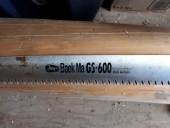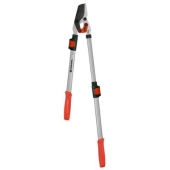




Permies is awesome!!!








 2
2








Invasive plants are Earth's way of insisting we notice her medicines. Stephen Herrod Buhner
Everyone learns what works by learning what doesn't work. Stephen Herrod Buhner
 2
2




Idle dreamer
 1
1




A human being should be able to change a diaper, plan an invasion, butcher a hog, conn a ship, design a building, write a sonnet, balance accounts, build a wall, set a bone, comfort the dying, take orders, give orders, cooperate, act alone, solve equations, analyze a new problem, pitch manure, program a computer, cook a tasty meal, fight efficiently, die gallantly. Specialization is for insects.
-Robert A. Heinlein
 3
3




 2
2








Permies is awesome!!!

 1
1




Some places need to be wild
 1
1




denise ra wrote:
Tyler Ludens, how many trees are you clearing by hand, what size, and how long does it take you? Obviously, you don't get them all if you also hire it done, so you can't keep up?
Idle dreamer
 1
1




If I leave the trees where they drop, any idea how long til they decompose? Will chipping them kill pasture grasses?
Invasive plants are Earth's way of insisting we notice her medicines. Stephen Herrod Buhner
Everyone learns what works by learning what doesn't work. Stephen Herrod Buhner
 1
1




Idle dreamer
 1
1




Eric Hanson wrote:I am going to suggest something kinda expensive but necessary.
With 400 acres, I assume you will need a tractor at some point. Assuming you do get a tractor, there is a device called a tree saw that attaches to the PTO. Basically, you back up to the offending tree and saw. While you saw, a bar pushes the tree over and you are done, the tree cut flush with the ground. Some versions substitute a grapple for the bar and then you can grab and drag the tree. But as you stated, you have 400 acres and 2 trees/acre, then you have 800 trees! That in my opinion is WAAAAYYY too many to do by hand. I strongly recommend the tractor route.
Eric










 1
1




Some places need to be wild
 1
1




Eric Hanson wrote:Travis, you shock me! You of all people I would assume would have an enormous cedar-mulching machine. I am joking of course. The OP stated that she was doing this by herself and did not want to get right up next to the trees. I would think the PTO saw would be perfect for this (not exactly the most permie solution, but it sounds like we are at the drastic measures stage). I think at this stage, just about any solution is going to be fairly mechanical. I for one would not recommend the pole-saw. These types of saws work fine for overhear trimming, but it would be terribly awkward sticking out sideways. It could be done, but there are better ways.
Eric










 1
1




Some places need to be wild
 1
1




Invasive plants are Earth's way of insisting we notice her medicines. Stephen Herrod Buhner
Everyone learns what works by learning what doesn't work. Stephen Herrod Buhner




Permies is awesome!!!
 1
1








Permies is awesome!!!




Permies is awesome!!!
 1
1




Standing on the shoulders of giants. Giants with dirt under their nails




Permies is awesome!!!
 2
2




Find out more about us at www.monsterskidsteerattachments.com
 1
1





|
Wanting to be someone else is a waste of who you are. - Kurt Cobain / tiny ad
Homestead Pigs Course
https://permies.com/wiki/365748/Homestead-Pigs
|





